Quick Airline Information:
✈Airline IATA* code: JL
✈Airline ICAO* code: JAL ✈Founded: 1 August 1951 ✈Website: www.jal.com✈Alliance: One World✈History
✈Operations and Destinations 🌍
✈Fleet ✈️
✈Photo Slide 📷✈Safety Video 🎬
✈Airline reviews ⭐
*IATA: (International Air Transport Association)
*ICAO: (International Civil Aviation Organization)
History Menu:
Japan Air Lines was established on 1 August 1951, with the government of Japan recognising the need for a reliable air transportation system to help Japan grow in the aftermath of the World War II. Its headquarters were located in Ginza, Chūō, Tokyo. The first flights started between the 27 and 29 August, with invitational flights on a Douglas DC-3 Kinsei. On 25 October, Japan's first postwar domestic airline service was inaugurated, using a Martin 2-0-2 aircraft.
On 1 August 1953, the government of Japan, reinvested in aviation and passed the Japan Air Lines Company Act, forming a new state-owned Japan Air Lines on 1 October, known simply as JAL, which assumed all assets and liabilities of its private predecessor. By 1953, the JAL network extended northward from Tokyo to Sapporo and Misawa, and westward to Nagoya, Osaka, Iwakuni, and Fukuoka using DC3 and DC4 aircraft.
On 2 February 1954, the airline began international flights, carrying 18 passengers from Tokyo to San Francisco on a Douglas DC-6B via Wake Island and Honolulu. The early flights were advertised as being operated by American crews and serviced by United Air Lines in San Francisco. The airline, also operated Douglas DC-7Cs during the late 1950s.
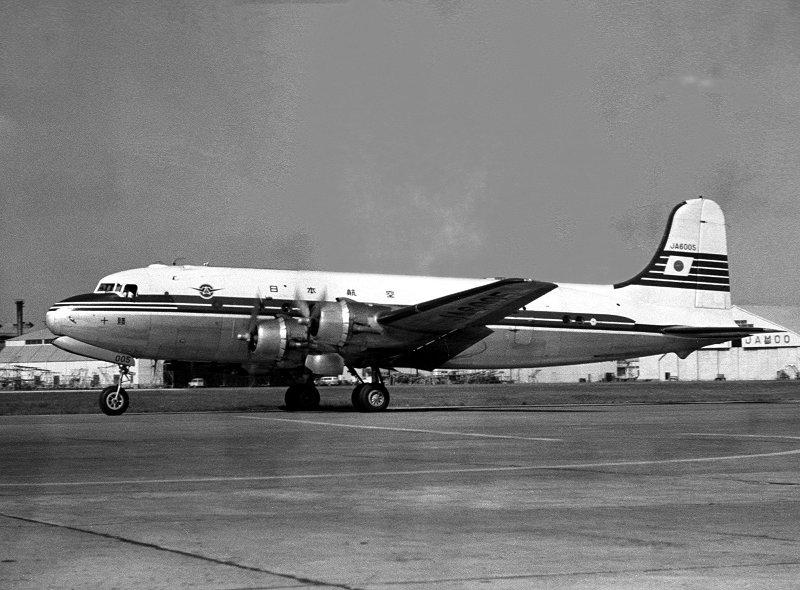
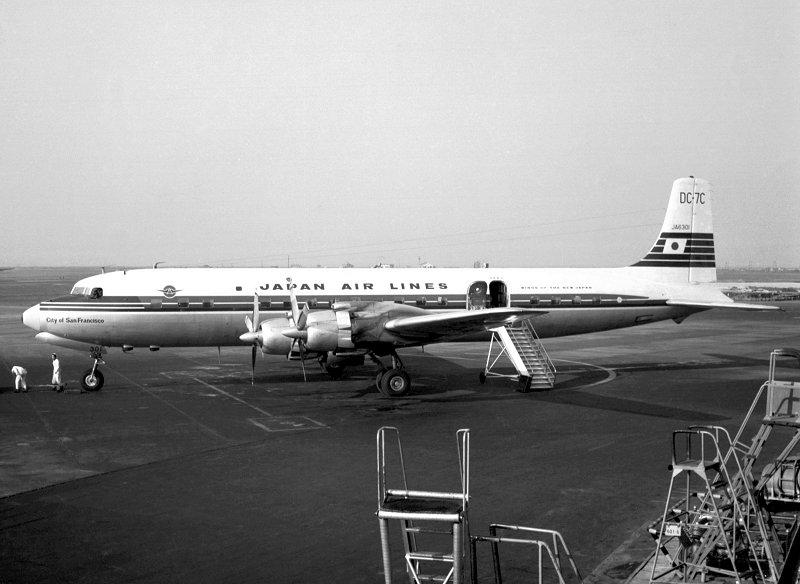
JAL flew to Hong Kong via Okinawa by 1955, having pared down its domestic network to Tokyo, Osaka, Fukuoka, and Sapporo. By 1958, the Hong Kong route had been extended to Bangkok and Singapore. With DC-7Cs, JAL was able to fly nonstop between Seattle and Tokyo in 1959.
In 1960, the airline took delivery of its first jet, a Douglas DC-8, introducing jet service on the Tokyo-Honolulu-San Francisco route. It used the DC8 extensively, retiring the last of the type in 1987. JAL also began flying to Seattle and Hong Kong in 1960. At the end of 1961, JAL had transpolar flights from Tokyo to Seattle, Copenhagen, London, and Paris via Anchorage, Alaska. During the 1960s, JAL flew to many new cities, including Moscow, New York, and Pusan. Flights to Europe via India started in 1962, initially with Convair 880s.
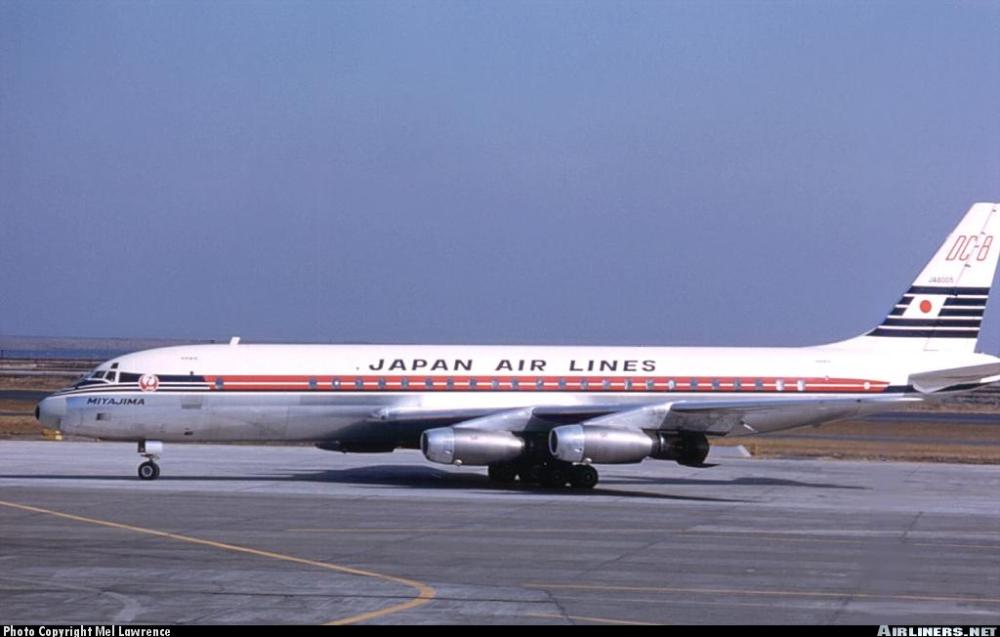
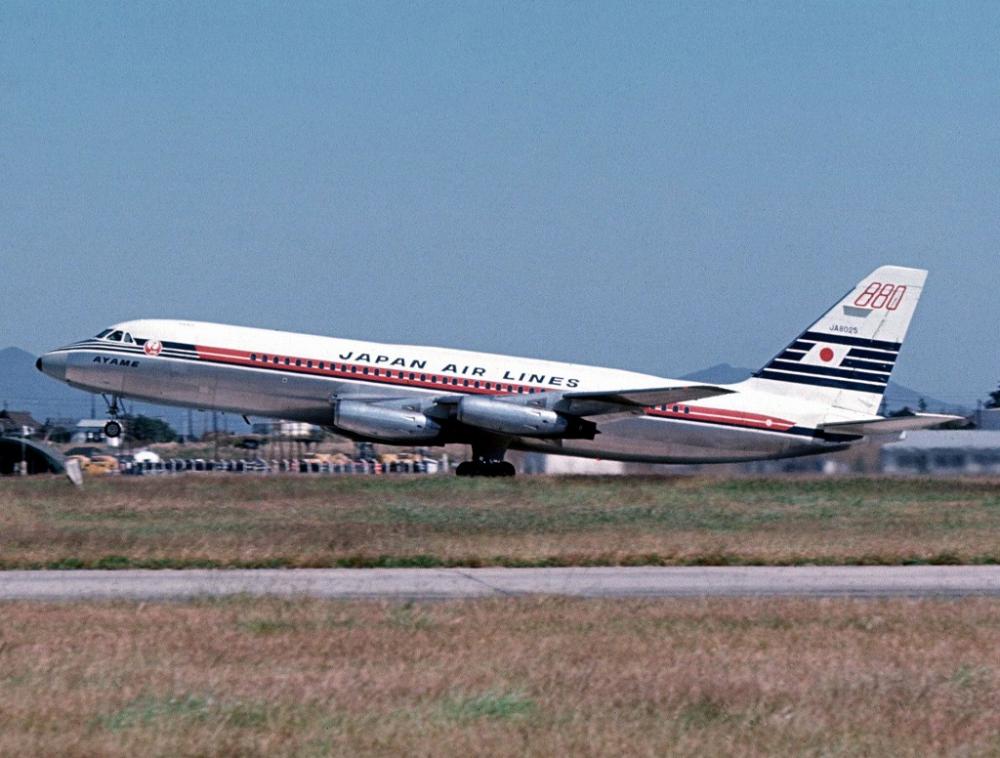
By 1965, Japan Air Lines was headquartered in the Tokyo Building in Marunouchi, Chiyoda, Tokyo. It also received its first Boeing 727-100 jets for domestic operations. Between 1967 and 1969, JAL had an agreement with Aeroflot to operate a joint service between Tokyo and Moscow using a Soviet Tupolev Tu-114. The flight crew included one JAL member, and the cabin crew had five members each from Aeroflot and JAL.
In 1972, enacted by the Japanese government, JAL was granted flag carrier status to operate international routes. The airline was also designated to operate domestic trunk routes in competition with All Nippon Airways and Toa Domestic Airlines.
The signing of a civil air transport agreement between China and Japan on 20 April 1974 caused the suspension of air routes between Taiwan and Japan on 21 April. A new subsidiary, Japan Asia Airways, was established on 8 August 1975, and air services between the two countries were restored on 15 September. During the 1970s, the airline bought the Boeing 747 in 1971 and McDonnell Douglas DC10 in 1976 for its growing routes within Japan and to other countries.
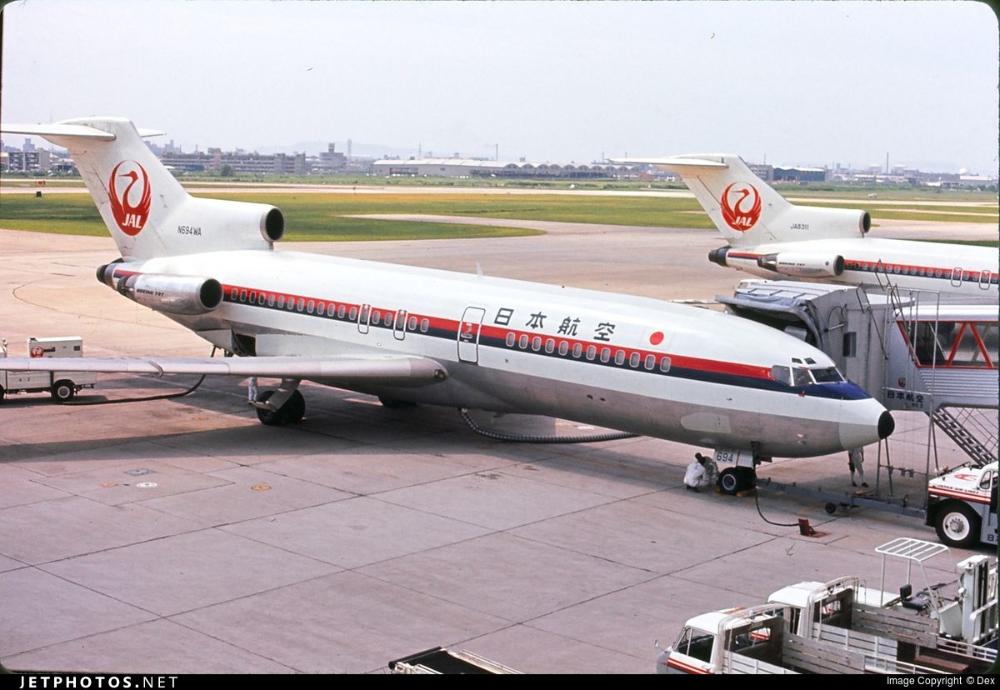
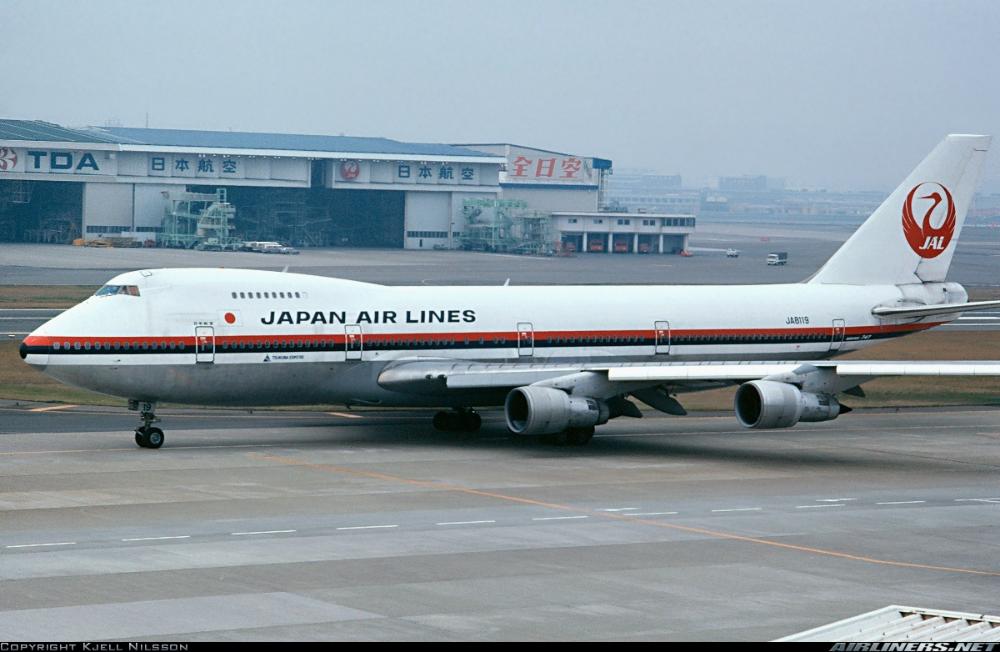
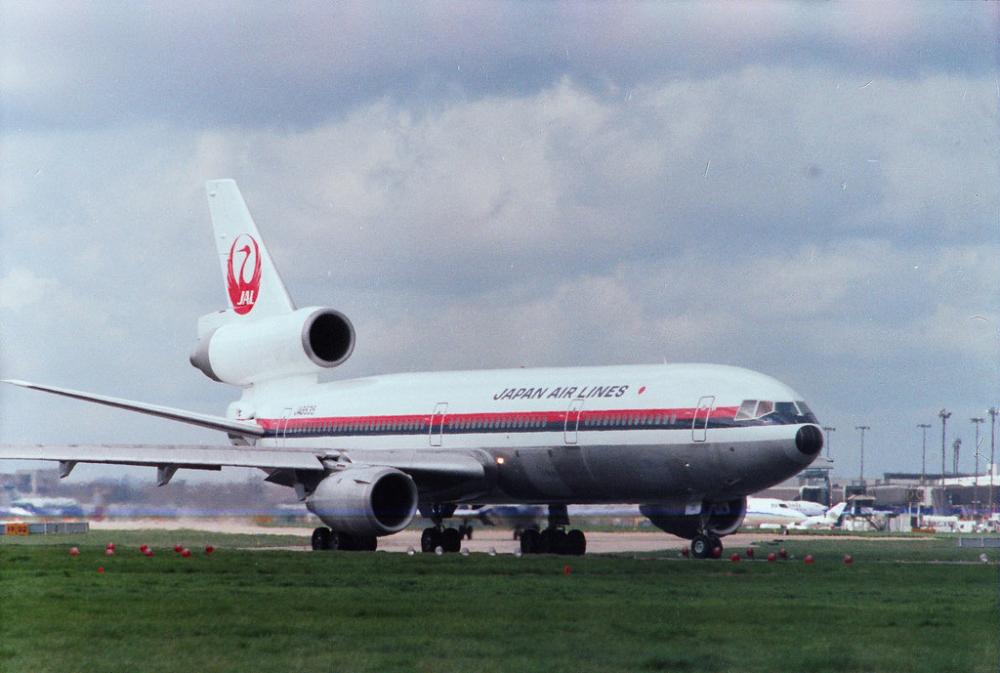
In the 1980s, the airline introduced new Boeing 747-100SR, Boeing 747-SUD, and Boeing 767-200 (1985) to the fleet, and retired the Boeing 727s and Douglas DC-8s. In 1978, JAL started flights to São Paulo and Rio de Janeiro via Anchorage and San Juan. Until 2009, the airline operated fifth-freedom flights between New York and São Paulo and between Vancouver and Mexico City.
In 1987, Japan Airlines was completely privatised, and the other two airlines in Japan, All Nippon Airways and Japan Air System, were permitted to compete with JAL on domestic and international routes. Increased competition resulted in changes to the airline's corporate structure, and it was reorganised into three divisions: international passenger service, domestic passenger service, and cargo (including mail) service. In 1989, after the reorganization, the logo and brand were updated and modernised.
.jpg)
In September 1996, an agreement with the Walt Disney Company made Japan Airlines the official airline of Tokyo Disneyland. JAL Express was established in April 1997, with Boeing 737 aircraft. In the 1990s, the airline encountered further economic difficulties stemming from recessions in the United States and United Kingdom, plus a domestic downturn. Following years of profit since 1986, the airline began to post operating losses in 1992. Cost-cutting, including the formation of the low-cost JAL Express domestic subsidiary and the transfer of tourist operations to JALways (the successor to Japan Air Charter), helped return the airline to profitability in 1999.
In 1997, the airline placed orders for Boeing 777s, allowing for fleet renewal. It was one of eight airlines participating in the Boeing 777 design process, shaping the design to their specifications.
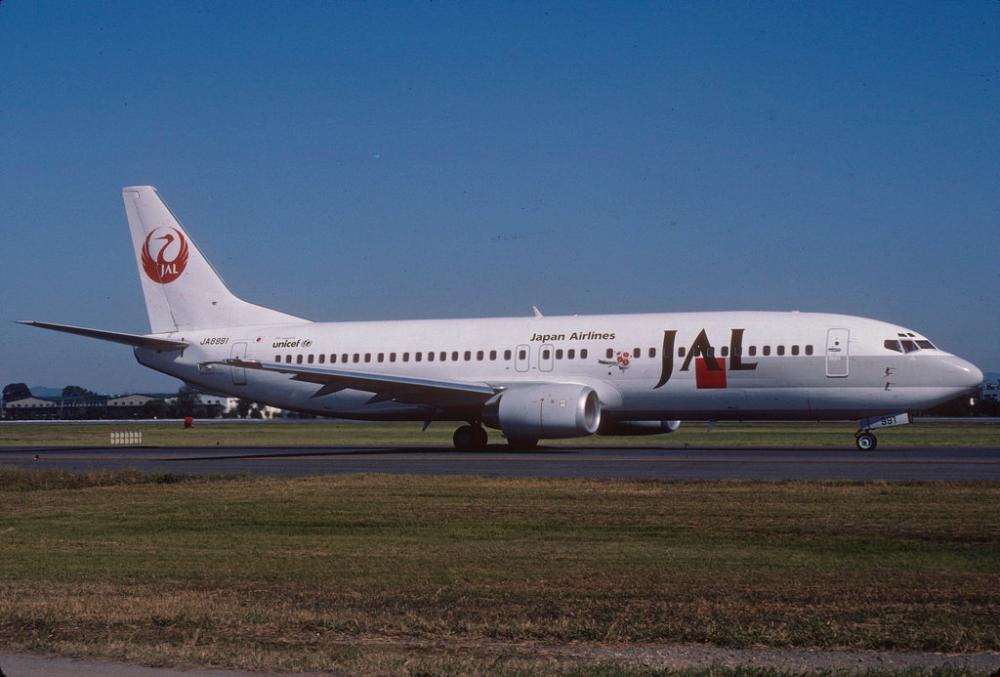
In 2001, Japan Air System and Japan Airlines agreed to merge; and on 2 October 2002, they established a new holding company called Japan Airlines System, forming a new core of the JAL Group. Aircraft liveries were changed to match the design of the new JAL Group.
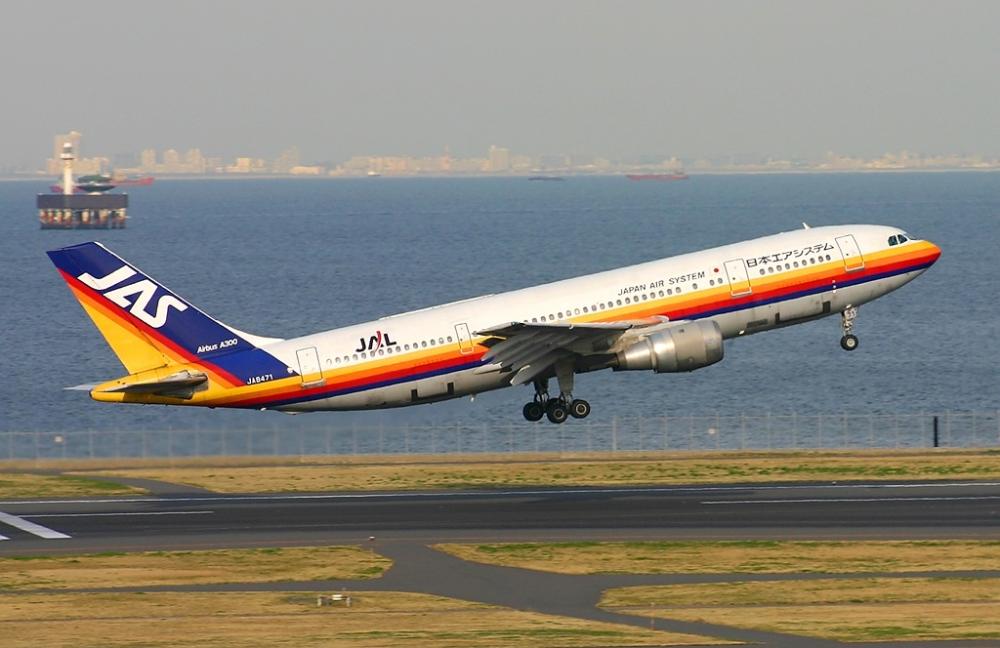
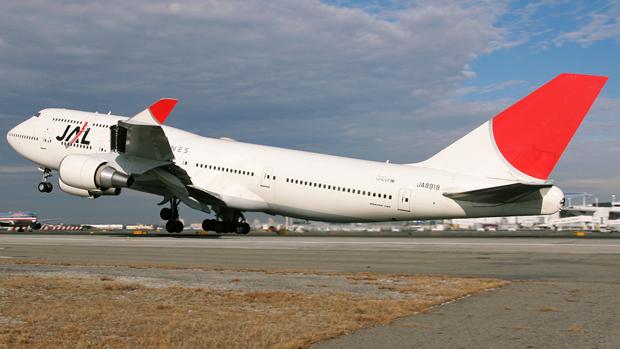
During 2001 and 2004, B767-300ER and B777-200ER aircraft were introduced on international flights. In addition to an extended range, they provided enhanced in-flight comfort. On 1 April 2004, JAL changed its name to Japan Airlines International and JAS changed its name to Japan Airlines Domestic.
On 1 October 2006, Japan Airlines International and Japan Airlines Domestic merged into a single brand, Japan Airlines International. The airline applied to join Oneworld on 25 October 2005. Japan Airlines, together with Malév and Royal Jordanian, joined the alliance on 1 April 2007. On 1 April 2008, JAL merged the operations of its subsidiary Japan Asia Airways (JAA) into JAL mainline operations.
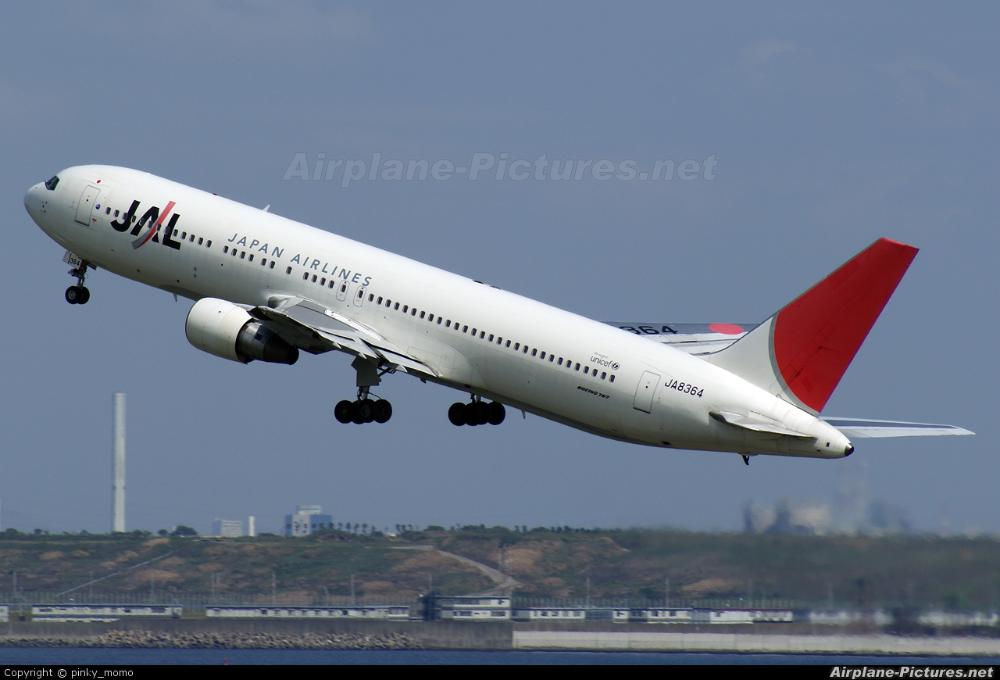
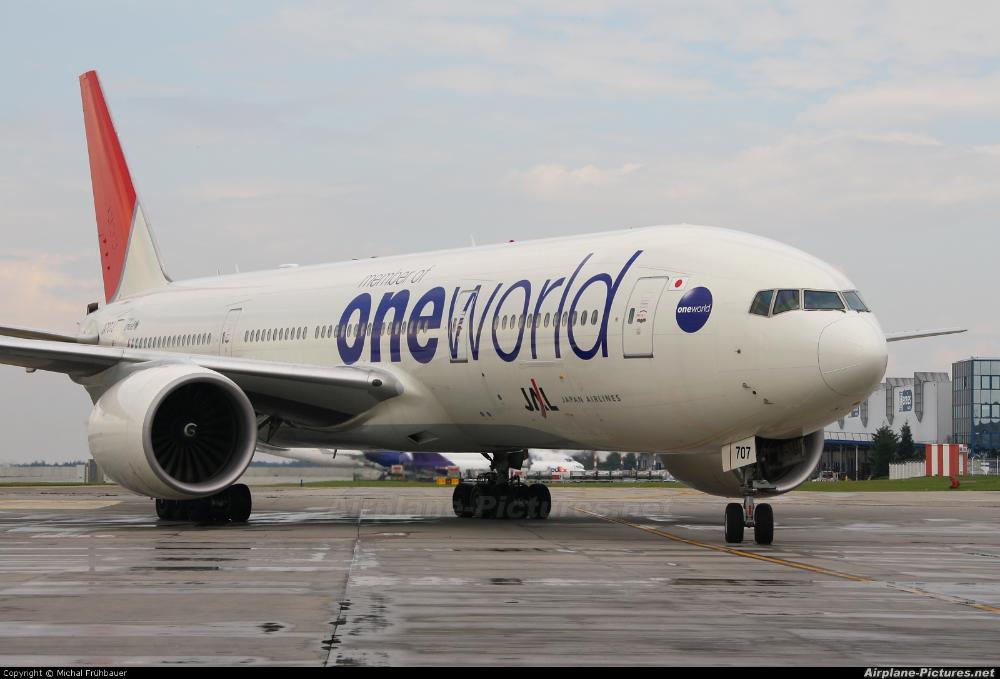
In 2009, Japan Airlines suffered steep financial losses, despite remaining Asia's largest airline by revenue. As a result, the airline embarked on staff cuts and route cutbacks in an effort to reduce costs. After weeks of speculation, JAL applied for protection under the Corporate Rehabilitation Law (the Japanese equivalent of Administration in the United Kingdom or a Chapter 11 bankruptcy filing in the United States) on 19 January 2010. Although JAL ultimately exited bankruptcy while remaining in the Oneworld alliance, JAL was seriously considering accepting a strategic investment from Delta Air Lines and joining the SkyTeam alliance during the period between September 2009 and February 2010.
After JAL filed for bankruptcy, there were further media reports that JAL would leave Oneworld in favor of SkyTeam, but JAL president Masaru Onishi said on 1 February that the new JAL leadership was "seriously reviewing the issue from scratch, without being influenced by previous discussions," On 7 February, several news outlets reported that JAL would decide to keep its alliance with American Airlines and end talks with Delta.
JAL emerged from bankruptcy protection in March 2011. Following its exit from bankruptcy protection, JAL began several new partnerships within the Oneworld alliance. The transpacific joint venture between JAL and American commenced in April 2011. JAL formed Jetstar Japan, a low-cost carrier joint venture with Qantas subsidiary Jetstar Airways, in July.
Japan Airlines took delivery of its first two Boeing 787-8s in March 2012, becoming the first airline to receive a 787 powered by the General Electric GEnx-1B engine. Following domestic proving flights to train operations, flight, cabin and maintenance personnel, the airline begun the first North American 787 service on 22 April connecting Narita Airport with Boston’s Logan International Airport.
In July 2013, in conjunction with oneworld member airline, Finnair, JAL starting new nonstop services to Helsinki. In 2015, Japan Airlines also took delivery of another new aircraft for its growing fleet, the Boeing 787-9, which arrived in June 2015, and was put into service on the Tokyo – Jakarta route.
.jpg)
In June 2019, Japan Airlines celebrated the arrival of the first Airbus aircraft since 2006, the new A350-900 was deployed in key international routes after domestic crew training. As well it will receive the A350-1000, scheduled to arrive by 2023.
The airline has come a long way since it's humble beginnings, after many mergers and new partnerships have matured, the airline is going from strength to strength raising the quality of its products and services. It strives in giving it's passengers a wider choice of destinations and partnerships through its membership with Oneworld alliance. It remains a strong brand in Japan, where competition has intensified in the last years, presenting many new challenges and a quick market adaptation.
It remains a competitive airline with good future prospects and many achievements in passenger comfort, connectivity and communication. Together with new aircraft delivered from Boeing and Airbus and advanced technologies, Japan Airlines is set to embrace the future ahead and continue to fly for many more decades to come.
History source: Wikipedia.org + japanairlines.com
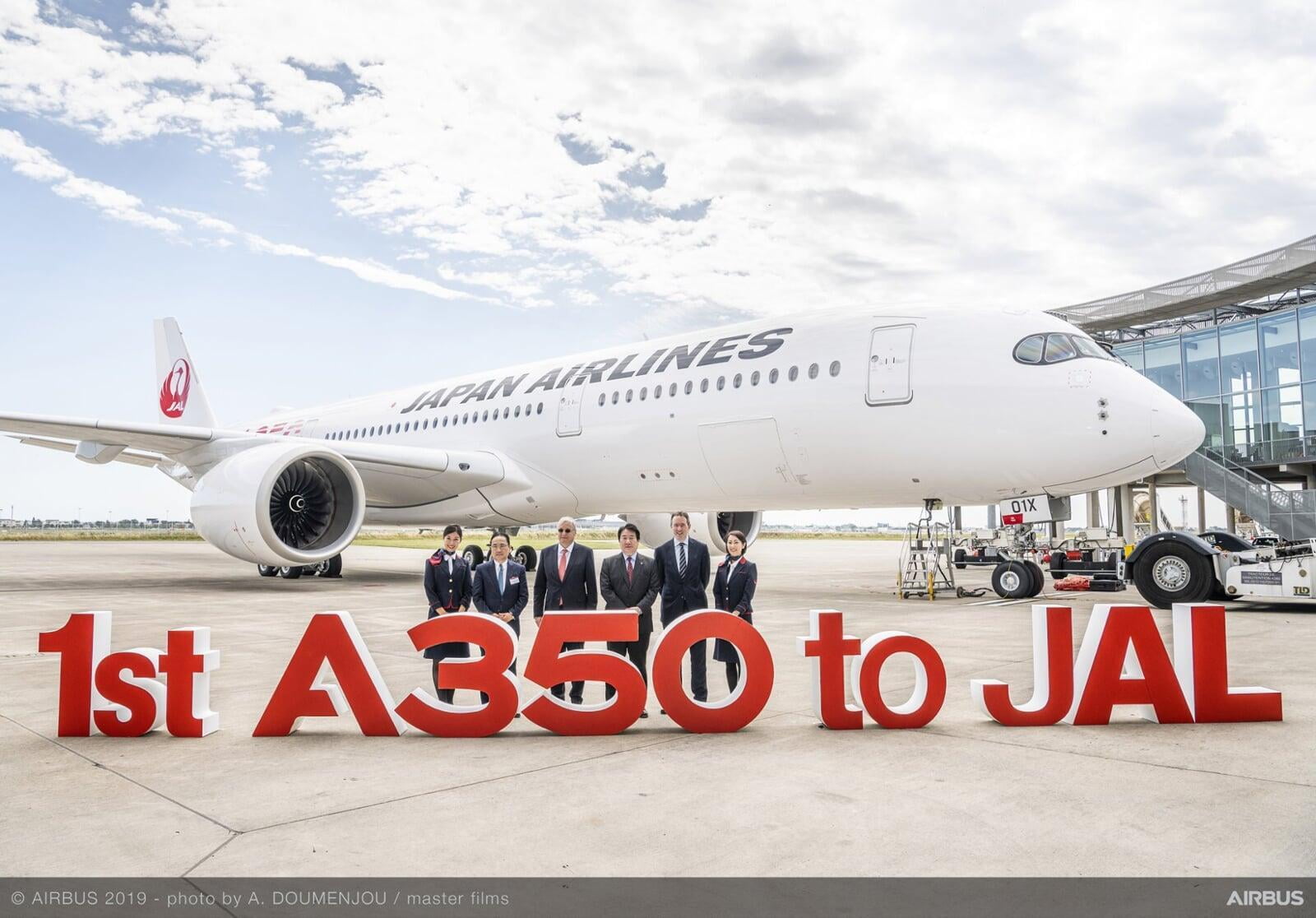
Operations and Destinations 🌍:
Japan Airlines flies directly to 33 international destinations in Asia, the Americas, Europe and Oceania. The airline's hubs are Tokyo's Narita and Haneda Airport, Osaka's Kansai International Airport and Osaka International Airport in Itami. The airline group also serves 59 domestic destinations within Japan. JAL group companies include Japan Airlines, J-Air, JAL Express, Japan Air Commuter, Japan Transocean Air and Ryukyu Air Commuter for domestic feeder services; and JAL Cargo for cargo and mail services.
Japan Airlines flies to the following destinations*:
| Region 🗺️ | Destinations 🌍🌎🌏 |
|---|---|
| ✈Japan (domestic) | Akita, Amami Ōshima, Aomori, Asahikawa, Fukuoka, Hakodate, Hanamaki, Hiroshima, Izumo, Kagoshima, Kitakyūshū, Kōchi, Komatsu, Kumamoto, Kushiro, Matsuyama, Misawa, Miyazaki, Nagasaki, Nagoya, Naha, Niigata, Obihiro, Ōita, Okayama, Osaka, Osaka, Ōzora, Sapporo, Shirahama, Takamatsu, Tokunoshima, Tokushima, Tokyo, Tokyo, Yamagata, Yamaguchi-Ube |
| ✈Asia | Angeles City, Bangkok, Beijing, Busan, Dalian, Delhi, Guam (USA), Guangzhou, Hanoi, Manila, Ho Chi Minh City, Hong Kong, Jakarta, Kaohsiung, Kuala Lumpur, Seoul, Shanghai, Shanghai, Singapore, Taipei, Tianjin |
| ✈Australia | Melbourne, Sydney |
| ✈North America | Boston, Chicago, Dallas, Honolulu, Kona, Los Angeles, New York City, San Diego, San Francisco, Seattle, Vancouver |
| ✈Europe and Russia | Frankfurt, Helsinki, London, Moscow, Paris |
*Destination list is for reference only. Please check directly with the airline for updates.
*Note some destinations are only seasonal.*Correct info as of Sept 2019.
Fleet ✈️:
Japan Airlines has a strong fleet of over 160 aircraft. The fleet counts entirely of Boeing products for it's long, medium and short haul routes. However in the coming years it will also take delivery of new Mitsubishi MRJ90 regional aircraft for its thinner routes and domestic operations. It is also awaiting confirmation for its newly ordered Airbus A350, to replace older types and fly new long haul routes.
The fleet* of Japan Airlines consists of the following aircraft:
| Network 🌐 | Aircraft ✈️ |
|---|---|
| ✈Short haul and Regional | Boeing 737-800, B767-300, B777-200. Mitsubishi MRJ90 (from 2021) |
| ✈Medium haul | Boeing 767-300/ER, 777-200ER/300, B787-8 |
| ✈Long haul | Boeing 777-200ER, 777-300ER, B787-8/9. Airbus A350-900, (A350-1000 to be delivered 2023). |
*Correct fleet info as of Sept 2019.
Japan Airlines Photo Slide 📷:
Japan Airlines Safety Video (B777-200) 🎬:
Reviews ⭐:
 |  |
|---|---|
| ✅ Member of the Oneworld Alliance, for mileage redemption. | 👎Fares are often expensive |
| ✅Respectable Airline and many years in service | 👎 Limited routes to Europe |
| ✅ Best Airline to fly direct to Japan. Convenient times. | 👎 No routes to South America, Africa or the Middle East. |
| ✅Friendly and professional cabin crew. | |
| ✅ Good Punctuality. | |
| ✅Free Online check-in and seat selection |











.png)